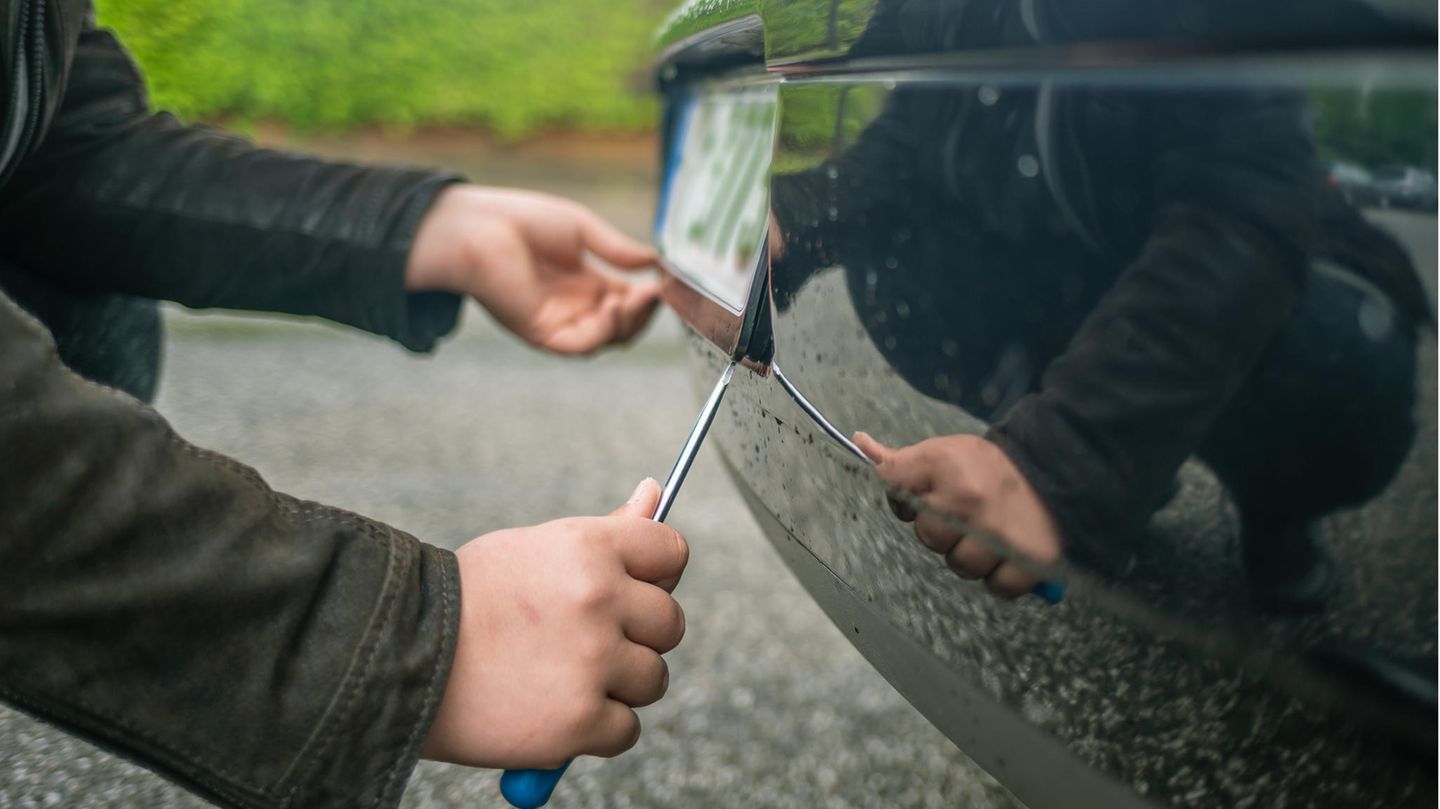Until now, how a license plate was attached to the car was largely left up to the car owner. This is supposed to change – and certain, quite popular, fastening solutions are to be banned altogether. In the event of an infringement, there is even a risk of a fine. Is that correct?
One makes motorists nervous all over Germany. In it, two employees apparently explain new rules for attaching license plates to cars. The new regulation was published in the of February 15, 2023.
No more velcro, magnet or suction cup for the number plate?
According to the GTÜ, it states that in future license plates will no longer be able to be easily attached to the car with magnets, suction cups or Velcro. The reason: With these methods, it is too easy to lose the license plate. In the future, the examiner explains, a license plate must be attached to the car so firmly that it cannot be lost on cobblestones, potholes or car washes.
In concrete terms, this means that attachment is only permitted if the license plate can only be removed with “a great deal of mechanical effort” or with “additional tools”. There will only be exceptions in the future if you can show a general operating permit (ABE) for an alternative mount.
The video ends, leaving many questions unanswered. “” writes that there are even penalties for disregarding the new rules. If the “rear license plate does not comply with the regulations”, “the license plates are in an improper condition” or “the license plate light is in an improper condition”, it costs a fine of ten euros each.
The “” continues to explain the impending fines. There it says that the fine can even be up to 60 euros if the violation is classified as an administrative offence. There is also the possibility that during an examination, further driving will be prohibited until the license plates are “fixed”.
Great uncertainties – and unclear formulations
However, the “Tuningblog” is not at all sure whether there have been any changes to the rules and writes: “We are currently of the opinion that the regulation is too vague! And that could probably remain the case in the future, because after a first Inspection (page 31 of the new PDF shows the draft § 12 Para. 6 FZV, which will in future prescribe how the attachment has to look like, justification on page 301) only seems to be regulated in it, like the angle and size of the license plate related to certain vehicle classes We couldn’t find anything about the type of attachment with regard to screws, magnets or Velcro!”
Luxury on four wheels
Up to 26 million euros for a vehicle: These are the most expensive new cars in the world
In addition to a general lack of clarity as to whether something is really going to change, the GTÜ does not answer open questions in the short video. When do the new rules apply? What about the number plate holders that most German drivers use? Strictly speaking, the signs are also very easy to remove from these holders and neither force nor tools are required.
That’s what the traffic sheet says
All reports refer to an amendment to paragraph 10 paragraph 5 of the Vehicle Registration Ordinance “Use of license plate fasteners”. This is in the traffic bulletin mentioned. In any case, with a look at the letter that the editors have, it is difficult to understand the rule changes.
There it says: “Section 10 paragraph 5 of the Vehicle Registration Ordinance (FZV) requires the “fixed attachment” of the license plate to the front and rear of the vehicle. In practice, the “fixed attachment” is sometimes interpreted differently. A license plate attachment is fulfilled According to a common understanding of the Federal Ministry for Digital Affairs and Transport (BMDV) and the supreme state authorities responsible for vehicle registration, the requirement for a fixed attachment within the meaning of the FZV if a tool is required to remove an attached license plate Any bracket on the vehicle (e.g. using two screws through the number plate or through the bracket into the body) is not absolutely necessary for this.However, the number plate, together with its bracket, must be firmly attached to the body and attached in such a way that it only by means of a tool or only with increased m mechanical effort (e.g. B. strong non-positive connection) is removable.”
The sheet then restricts and says: “A general operating permit can be applied for at the Federal Motor Transport Authority for license plate fasteners that can also be removed without tools. The essential requirements for a relevant general operating permit for a license plate holder are given below.”
Adhesive, Velcro and magnetic attachments actually appear by name when it goes on to say: “For all types of attachment (including adhesive, Velcro, magnet or similar attachments) of the license plate, its “firm attachment” must be ensured. When driving on cobblestones with potholes (“Belgian block”) and when using portal car washes, car washes or self-service wash bays, the number plate must not be lost. The “firm attachment” must be used for all types of attachment, even with environmental influences such as temperature fluctuations, moisture, impact and impact loads , UV weathering and corrosive media.”
There remain more questions than answers
The Traffic Gazette, on which all reports are based, does not state that the attachment methods are inadmissible. How to get an ABE, but also not. A ban is only mentioned elsewhere. There it says: “Mounts with visible retro-reflective or mirrored parts as well as mounts with visible surfaces in daylight luminous color are not permitted.”
In conversation with the star GTÜ explains: “The traffic bulletin was published on February 15, 2023 – the change has been in effect since that date. The leaflet is limited to January 1, 2024. It’s about license plate holders that are dismantled with tools, not the license plate itself. The “Normal” license plate holders are screwed to the vehicle and not removed with the license plate. If you remove the license plate, the license plate holder is still mounted on the vehicle. If, for example, with the magnet or Velcro holder, part of the license plate holder (in this case a One side of the Velcro fastener or one side of the magnet) with the license plate is removed, no tools are required. Accordingly, a high level of mechanical effort must be given to remove the license plate.”
In any case, reading the source leaves a lot of room for interpretation. A request to the BMDV has so far remained unanswered. One thing is certain: there is still a lot to be clarified – and panic is currently out of place. As long as the license plate doesn’t fall off the car almost by itself, you don’t have to run to the tool box immediately. In the meantime, GTÜ has published another video to clarify further questions.
Questions that have reached GTÜ in the past few days will be answered there. Frank Reichert, Head of Corporate Communications, says: “Our intention to explain the regulation was merely to clarify or point out the current situation.”
Source: Stern
I’m a recent graduate of the University of Missouri with a degree in journalism. I started working as a news reporter for 24 Hours World about two years ago, and I’ve been writing articles ever since. My main focus is automotive news, but I’ve also written about politics, lifestyle, and entertainment.




